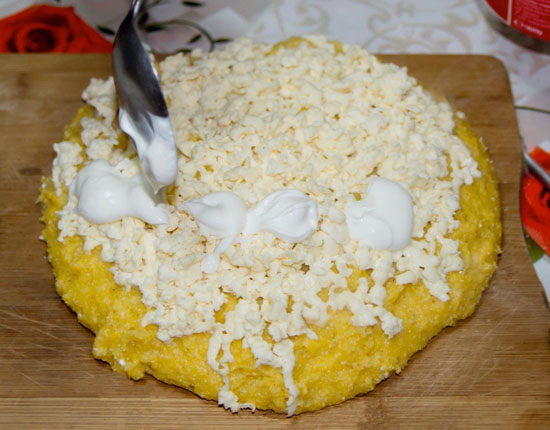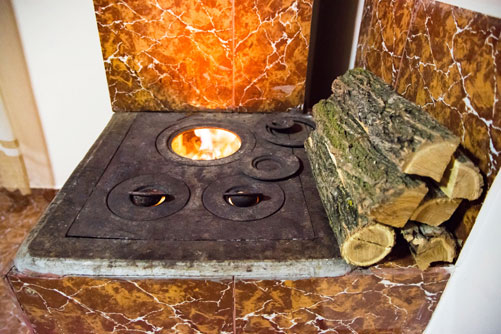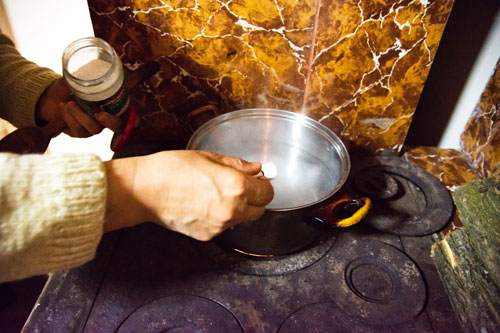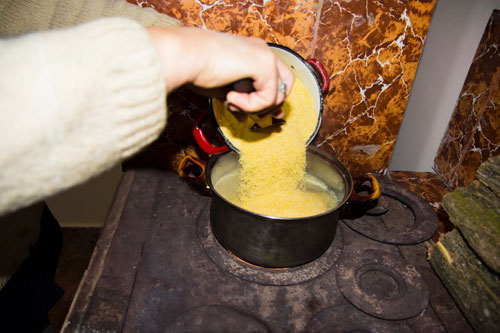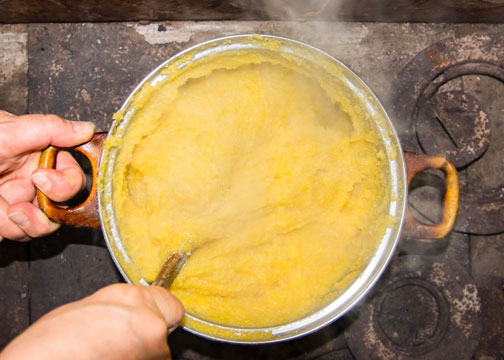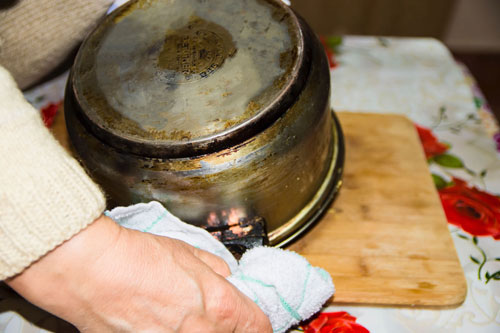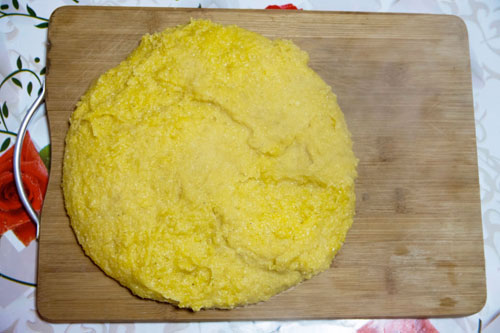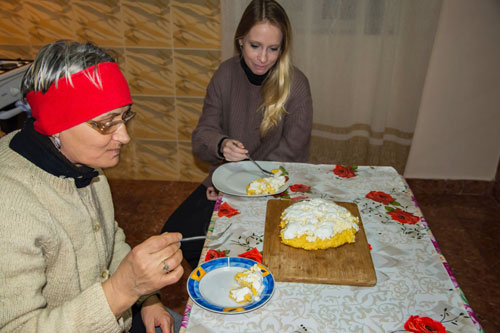Recipes From Afar: Mamaliga in Romania

A recipe for Romania's most essential, homiest, heartiest dish, straight out of the countryside: mamaliga.
All photos by Alex Chirita
My boyfriend and I had just arrived in Băcani, a small rural village in northeast Romania, about five hours from Bucharest by train. Before we could even hang up our coats and put down our bags, a pot of bright yellow mamaliga was being stirred in the kitchen. It was well after 10 p.m., but there was no question we’d be having a home-cooked Romanian meal before heading to bed.
And I’m so happy we did.
Made of corn flour, water, and salt, polenta-like mamaliga is as common as bread in Romania. In fact, it used to be known as “poor man’s bread” because wheat was not always available or affordable, but corn was. As a result, people started turning corn flour into a satisfying, versatile substitute for bread, and mamaliga was born.
For many Romanians, including Dorina, my boyfriend’s mother, mamaliga has always been a staple food in the household: “As far as I can remember, almost everything we ate was with mamaliga.”
The first time we sat around the table, mamaliga was served with sarmale, pickled cabbage rolls stuffed with rice and meat. The firm corn dish had a mild taste, but its warm, savory flavor perfectly complimented the hearty, vinegary sarmale.
Over the next few days, Dorina cooked mamaliga to accompany pork and noodle soup, and as a main dish with cheese and sour cream. Fortunately she agreed to demonstrate the latter preparation to us, and show us what had become second nature to her. It was time to make mamaliga magic.
First, heat the stove. In our case a ceramic stove was filled with wood, and the cast-iron burners were heated by fire. But an electric or gas stove will do just fine.
Next, bring a pot of water (about one liter) to boil. As soon as the water starts to boil, add two healthy teaspoons of salt.
Then slowly add in the corn flour, mixing continuously and pouring in more until it is the consistency of your liking. Our seasoned chef said you will know if you should add more (depending on whether you like it gooey or firm), but for us beginners, 250 grams of corn flour was about right.
The trick is to stir—with a wooden spoon, if you have one—the flour the entire time, and to keep mixing until all the lumps disappear. You don’t have to lower the heat if you’re paying close attention to it; this whole process happens rather quickly.
Once the mamaliga is at your desired consistency, get ready to remove it from the stove. Then flip your pot upside-down onto a wooden board. This is the traditional way of serving it.
We made the mamaliga slightly thick and firm so it wouldn’t run off the board, but when served in a bowl, it’s completely fine if it comes out softer.
Finally, for a delicious, standalone version of mamaliga, grate sweet sheep’s cheese on top and finish off with a few dollops of sour cream.
If you prefer trying plain mamaliga, it goes great with soup or any kind of meat (pork, lamb, chicken or beef).
Pofta buna—enjoy!
About the author: Celeste Allen is a writer, culture lover, and photo taker in London. While she has yet to figure out how to travel, eat, and listen to music for a living, she is working on turning her passion for storytelling into a full-time gig. See what she's up to on cbacontent.com and Instagram.

